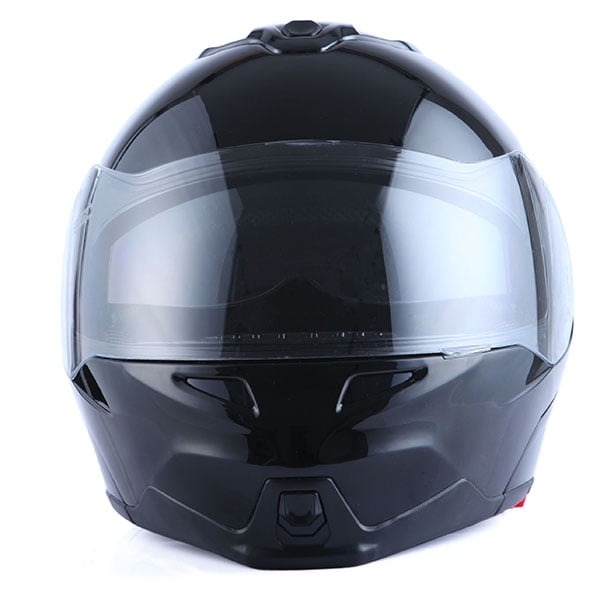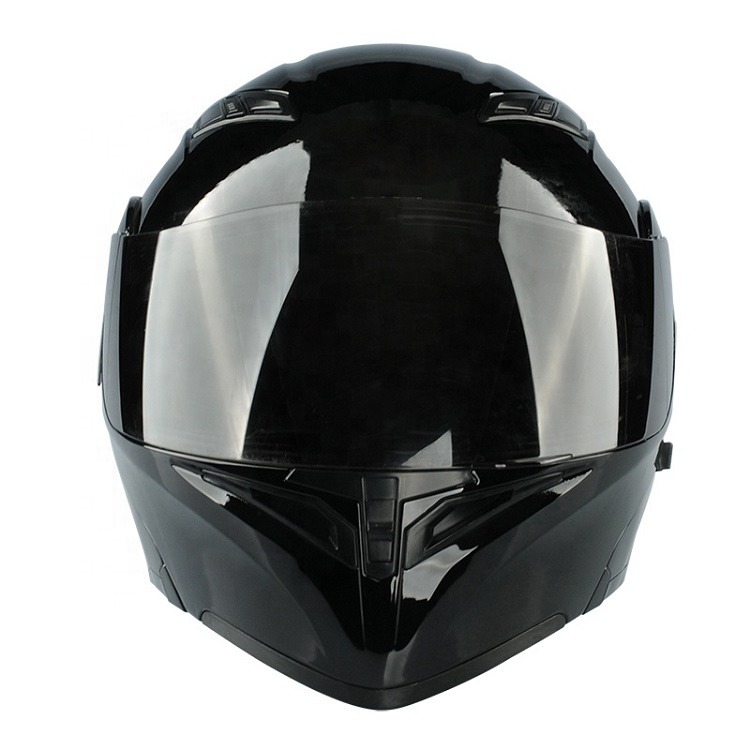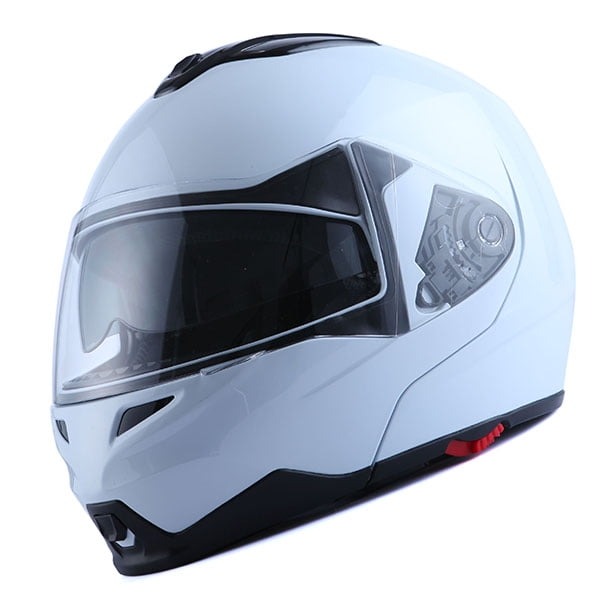Jan 2, 2025
How to Fit a Motorcycle Helmet: A Comprehensive Guide
Fitting a motorcycle helmet correctly is crucial for the safety and comfort of riders. Poorly fitted helmets can compromise the protective features of the helmet, making them ineffective in the event of an accident. Below, we’ll break down key aspects to consider when figuring out how to fit a motorcycle helmet.
Importance of Proper Helmet Fit
The right helmet fit is crucial for safety on the road. A helmet that’s too big can slip off during an accident, while one that’s too tight can cause discomfort or impair vision. Every rider must understand that the primary purpose of a motorcycle helmet is to protect the head in the event of a collision. It can only perform this vital function if it fits correctly. The importance of a properly fitting helmet cannot be overstated. It significantly increases your chances of survival in a crash.
A helmet must snugly encompass the rider’s head, ensuring that it stays in place and provides maximum protection. Studies show up to 25% of riders may have a poorly sized helmet, which can be just as dangerous as not wearing one at all. Moreover, the discomfort a bad fit causes can distract a rider, leading to a higher risk of accidents. A well-fitted helmet doesn’t move around on your head. It applies even pressure around the skull without pressing too hard in any one place.
In summary, a proper helmet fit is not just about comfort – it’s a critical safety measure every motorcyclist should prioritize. It helps ensure that, in the event of an accident, the helmet will stay in place and absorb the impact force, protecting the brain and skull. Wearing a correctly sized helmet effectively reduces the risk of fatal head injuries, making it a non-negotiable aspect of motorcycle safety gear.
How to Measure Your Head for a Helmet

Measuring your head properly is the first step to finding a helmet that fits well. Here’s a basic guide to help you measure your head for a motorcycle helmet:
- Use a tailor’s tape or a string: Find a fabric measuring tape or a non-stretchy string.
- Position it correctly: Place the tape or string about an inch above your eyebrows.
- Encircle the widest part of your head: Make sure the tape or string goes around the largest part of the back of your head, too.
- Record the measurement: If you’re using a string, mark the point where it meets the end, then lay it against a ruler or a tape measure to find the length.
- Note the size: Write down the measurement in both inches and centimeters.
This process will determine your helmet size. Compare your measurement with the size charts provided by helmet manufacturers. Remember, sizes can vary between brands, so it’s essential to check each chart individually. A correct initial measurement is a step towards ensuring that your helmet can offer the best protection possible. Keep in mind to measure twice to be certain of the accuracy.
Understanding Head Shape and Helmet Compatibility
Knowing your head shape is as important as knowing your head size when fitting a motorcycle helmet. There are generally three categories of head shapes to consider:
- Round Oval: This shape has near-equal length and width.
- Intermediate Oval: This is the most common head shape, slightly longer front to back.
- Long Oval: Characterized by a much longer, narrower shape.
Determining your head shape helps in choosing a helmet that sits comfortably. Here’s how to figure it out:
- Flatten your hair: To get a clearer view of your head shape, flatten your hair as much as possible.
- Take a picture: With a friend’s help, take a picture of your head from above to see its outline.
- Match your shape: Compare your head to the descriptions of the helmet shapes provided by manufacturers.
Different brands may tailor their helmets to different head shapes, so it’s crucial to find one that aligns with yours. This ensures the pressure is evenly distributed across your head, preventing discomfort and maintaining the helmet’s position during a ride or in case of an impact. After you know your head shape, selecting a helmet becomes much easier. With the right helmet shape, you can enjoy a ride knowing your safety gear is as reliable as it should be.
Choosing the Right Motorcycle Helmet Type
When choosing a motorcycle helmet, the type you select is as important as the fit. Different helmet styles offer varying levels of protection and comfort and are suitable for different riding conditions and preferences. Here are the types of helmets you should consider:
- Full Face Helmet: Offers the most coverage and is ideal for ultimate protection. It covers the entire head and face, including the chin, which is often exposed in other helmet types.
- Modular Helmet: Also known as flip-up helmets. They combine the protection of full-face helmets with the convenience of open-face helmets. The chin bar and visor can lift up.
- Open Face Helmet: Provides coverage for the top, back, and sides of your head but leaves the face exposed. It’s favored by riders who prefer feeling the breeze on their face.
- Half Helmet: Covers the top of your head and sometimes part of the forehead. It offers the least protection and is not recommended for safety-conscious riders due to its limited coverage.
- Off-Road Helmet: Designed for adventure and motocross riders. These helmets have an elongated chin and visor portion for better airflow and are lightweight for comfort during rigorous riding.
- Dual Sport Helmet: A hybrid of full face and off-road helmets. They offer good versatility for both on-road and off-road use, with features like visors and increased ventilation.
Once you have a clear idea of your head size, shape, and the type of helmet you need, it’s time to try them on. Keep in mind that the fit of a helmet can vary between different models and brands. Always ensure your helmet is snug and comfortable, and adheres to safety standards. Always buy a new helmet to guarantee maximum safety and performance.
Ensuring a Snug and Comfortable Fit
Ensuring your motorcycle helmet fits snugly and comfortably is crucial. It not only ensures safety but also enhances your riding experience. Here are key steps to make sure your helmet fits properly:
- Check for Movement: Your helmet should stay firmly in place. Nod and shake your head; the helmet should not wobble or slide.
- Consider the Cheek Pads: They should touch your cheeks without pressing too hard. Replaceable pads can help adjust the fit if necessary.
- Pay Attention to Pressure Points: The helmet should apply even pressure around your head. No single point should feel overly tight.
- Test the Fit of the Chin Strap: It should secure snugly under your chin. You should be able to fit only one or two fingers between the strap and your chin.
- Wear It for a While: Keep the helmet on for at least 15 minutes. This will reveal any discomfort from a poor fit before you ride.
- Consult the Sizing Chart: Always refer to the helmet’s sizing chart for the best fit. Remember, sizes vary between brands.
- Consider Helmet Lining: Some helmets come with removable and washable linings for better hygiene and fit adjustment.
- Check Certification: Ensure your helmet meets safety standards like DOT or ECE.
A correctly fitting helmet can be the difference between a minor and severe injury in an accident. Prioritize fitting as part of your motorcycle safety routine. Remember, comfort is key for concentration and reaction time when riding.
Adjusting Helmet Pads for Optimal Comfort

Proper helmet fit is not only about the helmet shell. The interior padding plays a critical role in comfort and fit. Helmet pads, especially cheek pads, are adjustable. They can create a custom fit for any rider. Here are some pointers for getting the best pad fit for your motorcycle helmet:
- Check the Cheek Pads: Cheek pads should touch your face without being too tight. If they cause you to bite your cheeks, they are too tight. If the helmet shifts easily with movement, they might be too loose.
- Padding Thickness: Some helmets offer pads in various thicknesses. You can adjust the inner padding to improve fit and comfort. Use thicker pads if the helmet feels loose. Use thinner pads if it is too tight.
- Chin Strap Adjustment: The chin strap pad should sit snugly under your chin but must allow you to open your mouth. It should not dig into your skin or cause discomfort.
- Top and Back Pads: Some helmets have removable pads on the top and back. You can adjust or replace these pads to better fit the contour of your head.
- Pad Maintenance: Keep pads clean to maintain their shape and comfort. Most pads are washable but follow manufacturer instructions to avoid damage.
By adjusting the helmet’s pads, you can achieve a personalized, snug, and comfortable fit. It’s crucial for a safe and enjoyable ride. Always refer to the manufacturer’s guide for pad sizes and replacement options.
Trying on Helmets: The Checklist
When you’re in the market for a new motorcycle helmet, trying on different models is essential. A good fit is as crucial as the helmet’s safety features. Here is a checklist to help you determine if a helmet is the right fit:
- Ensure no gaps between the helmet interior and your head. If you feel space, it’s too large.
- Check the pressure on your forehead and at the back of your head. It should be even.
- Test the cheek pads by seeing if you can fit your tongue between your cheek and the pad. They should be snug, not tight.
- Move the helmet side to side and front to back. It should move your skin, but not rotate freely.
- Try to insert your fingers between your brow and the helmet. If you can, it’s too big.
- Fasten the chinstrap and try to pull the helmet off from the back. It should stay put.
- Wear the helmet for a few minutes. Notice any hotspots or pressure points that could cause discomfort on a ride.
Use these steps with each helmet you try. If a helmet passes this checklist, it’s a strong contender. Don’t rush the process. You’re choosing your most important piece of safety gear. Finally, remember that proper maintenance is as important as a good first fit to keep your helmet in top condition over time.
Maintaining Helmet Fit Over Time

Once you’ve found the perfect fitting helmet, maintaining its fit is essential for ongoing protection and comfort. Helmet components can degrade or change shape with regular use, so regular maintenance is important. Here are some tips to help you maintain the fit of your motorcycle helmet over time:
- Inspect the Pads: Regularly check the cheek pads and liners for wear and tear. If they start to compress or lose shape, it might be time to replace them.
- Clean the Helmet: Keeping your helmet clean helps the materials last longer. Use mild soap and water for the exterior and follow the manufacturer’s instructions for washing the interior.
- Avoid Harsh Chemicals: Strong cleaners can damage helmet materials. Only use cleaning products approved by the helmet manufacturer.
- Store Properly: When not in use, store your helmet in a cool, dry place out of direct sunlight, which can degrade materials over time.
- Check the Fit Annually: People’s head shapes can change. Weight loss or gain can affect how your helmet fits. Try your helmet on occasionally to ensure it still fits snugly.
- Follow the Five-Year Rule: Replace your helmet every five years or sooner if it’s been in an accident, even if it appears undamaged.
Properly maintaining your helmet ensures that it continues to provide the level of protection you expect. Remember, a helmet is an investment in your safety on the road.
More Details